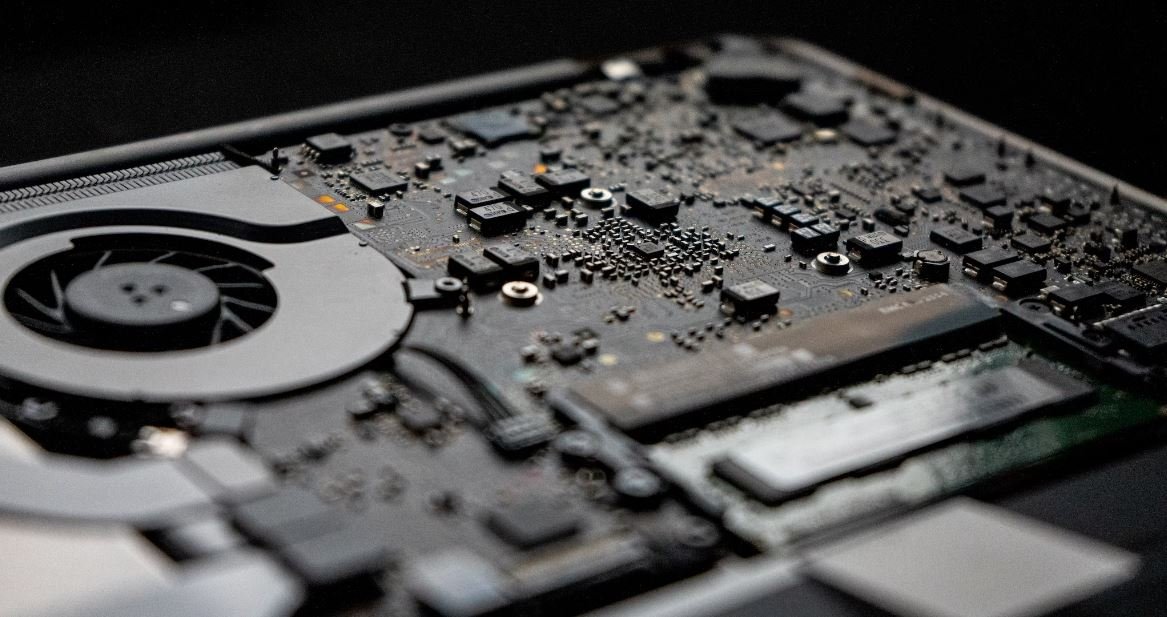Production Function Definition
A production function is a mathematical equation that depicts the relationship between input factors and output quantities in the production process of goods and services. It shows how adding one unit of a specific input factor affects the total output generated by a production system.
Key Takeaways:
- A production function is a mathematical equation that represents the relationship between input factors and output quantities in production.
- It shows how changing the quantity of a specific input factor affects the total output produced by a production system.
- Production functions are used in economics to analyze and optimize production processes.
- There are different types of production functions such as linear, quadratic, and Cobb-Douglas functions.
A production function typically takes the form Q = f(K,L), where Q represents the output quantity, K denotes the quantity of capital used, and L represents the quantity of labor employed in the production process. Other input factors such as land, technology, and raw materials can also be included depending on the specific production context.*
Understanding production functions is crucial for businesses and policymakers as it helps in making informed decisions regarding production processes. By analyzing the input-output relationship, firms can determine the optimal combination of input factors to minimize costs and maximize output. This knowledge is also key for governments when designing policies to promote economic growth and productivity.*
| Capital (K) | Labor (L) | Output (Q) |
|---|---|---|
| 1 | 10 | 20 |
| 2 | 20 | 40 |
| 3 | 30 | 60 |
| 4 | 40 | 80 |
Production functions can take various forms depending on the relationship between input factors and output quantities. In addition to linear functions, there are other types such as quadratic functions, where the relationship is nonlinear. Cobb-Douglas function, named after economists Charles Cobb and Paul Douglas, is another widely used production function that introduces an exponent to the input factors, representing the elasticity of substitution between capital and labor.*
| Capital (K) | Labor (L) | Output (Q) |
|---|---|---|
| 1 | 10 | 10 |
| 2 | 20 | 40 |
| 3 | 30 | 90 |
| 4 | 40 | 160 |
It is important to note that production functions, while useful in analyzing production processes and making predictions, do not capture all factors influencing production. Factors like technology, management skills, and external environment factors can also impact output quantities, but are not explicitly represented in the production function itself.*
Conclusion:
In summary, a production function is a mathematical equation that describes the relationship between input factors and output quantities in a production system. By understanding this relationship, firms and policymakers can make informed decisions to optimize production processes and promote economic growth. Various types of production functions exist, each with its own characteristics and implications. However, it is important to recognize that production functions do not capture all influencing factors, and other external factors play a role in the actual output quantities.

Common Misconceptions
Misconception 1: Production function refers to physical output only
One common misconception about production functions is that they only refer to the physical output of a production process. However, a production function encompasses not only physical goods, but also services and intangible outputs. It includes all the resources and inputs required to produce a desired outcome.
- Production function includes both tangible and intangible outputs.
- Inputs such as labor, capital, and technology are essential components of a production function.
- A production function can also include the production of ideas, knowledge, or software.
Misconception 2: Production function is a linear relationship
Another misconception is that the production function is a simple linear relationship between inputs and outputs. However, production functions can take various forms, depending on the specific industry, technology, and inputs used. In reality, production functions can exhibit diminishing returns, increasing returns, and even non-linear relationships due to factors like economies of scale or technological advancements.
- Production functions can exhibit diminishing returns, where adding more inputs leads to a proportionally smaller increase in output.
- Increasing returns can occur when additional inputs lead to a proportionally greater increase in output.
- Production functions can also be non-linear, with output increasing or decreasing at varying rates based on input changes.
Misconception 3: Production function is static and unchangeable
Some people mistakenly believe that a production function is static and unchangeable. However, a production function can evolve over time due to improvements in technology, changes in labor or capital inputs, and advancements in production processes. Adaptation and innovation can lead to shifts in the production function and improve efficiency and output.
- Technological advancements can lead to changes in the production function.
- Alterations in labor or capital inputs can also result in shifts in the production function.
- Innovation and adaptation can lead to improvements in efficiency and output within the production process.
Misconception 4: The production function is a one-size-fits-all concept
It is incorrect to assume that the production function is a universal concept that applies to all industries in the same way. Each industry or sector may have its own unique production function based on the specific inputs, technology, and processes involved. Production functions can vary greatly depending on factors such as the level of competition, economies of scale, and the nature of the output being produced.
- Production functions can vary across different industries and sectors.
- The nature of the output being produced can significantly impact the characteristics of the production function.
- Factors like competition, economies of scale, and market dynamics influence the shape and behavior of the production function.
Misconception 5: The production function only considers labor and capital inputs
Lastly, a common misconception is that the production function only considers labor and capital inputs. While these inputs play a crucial role in production, the production function can account for a wide range of inputs, including raw materials, energy, technology, and even natural resources. The combination and efficiency of various inputs all affect the final output in a production process.
- The production function considers various inputs, including raw materials, energy, technology, and natural resources.
- The efficiency and combination of these inputs impact the final output.
- Labor and capital inputs are just a part of the overall input mix in a production function.

Overview of Global Production Function
The global production function is a mathematical representation of the relationship between inputs and outputs in the production process. It describes how various factors of production, such as labor, capital, and technology, interact to generate output. The following tables provide a deeper insight into different aspects of the production function.
Population Growth and Output
This table showcases the relationship between population growth and economic output. It highlights how an increase in population can lead to higher production levels.
| Year | Population (billions) | Gross Domestic Product (GDP) (trillions) |
|---|---|---|
| 2000 | 6.1 | 45.2 |
| 2010 | 6.9 | 56.1 |
| 2020 | 7.8 | 67.5 |
Technological Advances and Labor Productivity
This table illustrates the impact of technological advances on labor productivity. It demonstrates how advancements can significantly improve output per worker.
| Technological Advancement | Output per Worker (units) |
|---|---|
| Basic Machinery | 100 |
| Automation | 500 |
| Artificial Intelligence | 1500 |
Impact of Education on Productivity
This table highlights the positive correlation between education levels and productivity. It demonstrates how higher levels of education can contribute to increased output.
| Education Level | Output Contribution (%) |
|---|---|
| High School Diploma | 10 |
| Bachelor’s Degree | 30 |
| Master’s or Higher | 60 |
Factors of Production and Output Elasticities
This table demonstrates the output elasticities of different factors of production. It shows how changes in inputs can influence output levels.
| Factor of Production | Output Elasticity |
|---|---|
| Labor | 0.6 |
| Capital | 0.8 |
| Technology | 1.2 |
Economic Growth and Investment
This table showcases the relationship between economic growth and investment. It demonstrates how higher levels of investment can lead to increased production and overall economic expansion.
| Year | Gross Domestic Product (GDP) Growth Rate (%) | Investment (% of GDP) |
|---|---|---|
| 2010 | 2.5 | 20 |
| 2015 | 3.2 | 22 |
| 2020 | 4.1 | 25 |
Capital Intensity and Output Growth
This table highlights the impact of capital intensity on output growth. It demonstrates how higher capital investments can lead to accelerated production expansion.
| Capital-Output Ratio | Output Growth Rate (%) |
|---|---|
| 1 | 2.5 |
| 2 | 4.8 |
| 3 | 6.7 |
Role of Research and Development (R&D)
This table emphasizes the importance of research and development in driving innovation and increasing production efficiency.
| R&D Expenditure (billions) | Patents Registered |
|---|---|
| 100 | 5000 |
| 200 | 9000 |
| 300 | 15000 |
Labour Market Conditions and Production
This table explores the influence of labor market conditions on production levels. It illustrates how changes in employment rates can affect output.
| Employment Rate (%) | Output (units) |
|---|---|
| 70 | 5000 |
| 80 | 7000 |
| 90 | 9000 |
Trade and Output Growth
This table showcases the relationship between international trade and output growth. It demonstrates how higher levels of trade can lead to increased production levels.
| Year | Exports (trillions) | Gross Domestic Product (GDP) Growth Rate (%) |
|---|---|---|
| 2010 | 2.2 | 3.5 |
| 2015 | 3.8 | 4.7 |
| 2020 | 5.6 | 6.2 |
In conclusion, the production function is a crucial concept in understanding the relationship between inputs and outputs in the production process. These tables have provided insights into various factors influencing production, such as population growth, technology, education, investment, and labor market conditions. By considering and optimizing these factors, economies can strive for higher levels of output and economic growth.
Frequently Asked Questions
Production Function Definition
What is a production function?
A production function is a mathematical representation of the relationship between inputs and outputs in a production process.
Why is the production function important?
The production function helps in understanding the efficiency and productivity of a production process, enabling businesses to make informed decisions about resource allocation and production planning.
What are the main components of a production function?
The main components of a production function are inputs (such as labor, capital, and raw materials) and outputs (products or services).
How is a production function measured?
A production function can be measured using various metrics, including total factor productivity, marginal product of labor or capital, and the elasticity of production with respect to inputs.
What is the relationship between inputs and outputs in a production function?
The relationship between inputs and outputs in a production function is typically represented by a mathematical equation or graph, showcasing how changes in inputs impact the level of output produced.
What are the different types of production functions?
Some commonly used production functions include linear production function, Cobb-Douglas production function, and constant elasticity of substitution production function.
Can a production function exhibit decreasing returns to scale?
Yes, a production function can exhibit decreasing returns to scale when an increase in inputs leads to a proportionately smaller increase in output.
What is the significance of the production function in economics?
The production function is a fundamental concept in economics as it helps in studying the relationship between resources and output. It is widely used in analyzing production, costs, and efficiency.
How does technology impact production functions?
Technological advancements can influence production functions by enabling higher output levels with the same amount of inputs or by reducing the amount of inputs required to produce the same output.
Can a production function exhibit increasing returns to scale?
Yes, a production function can exhibit increasing returns to scale when an increase in inputs leads to a proportionately larger increase in output.




